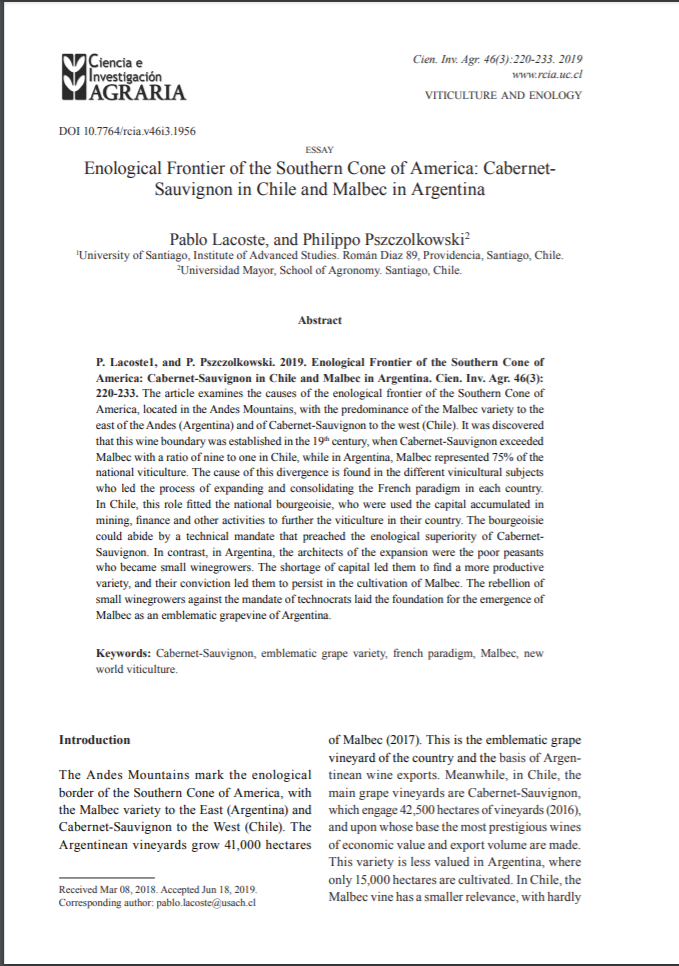Enological Frontier of the Southern Cone of America: Cabernet-Sauvignon in Chile and Malbec in Argentina

Fecha
2019Autor
Pszczolkowski, Philippo [Univ Mayor, Sch Agron, Santiago, Chile]
Lacoste, Pablo
Ubicación geográfica
Notas
HERRAMIENTAS
Acceda a títulos restringidos
¿Cómo descargar?Resumen
The article examines the causes of the enological frontier of the Southern Cone of America, located in the Andes Mountains, with the predominance of the Malbec variety to the east of the Andes (Argentina) and of Cabernet-Sauvignon to the west (Chile). It was discovered that this wine boundary was established in the 19th century, when Cabernet-Sauvignon exceeded Malbec with a ratio of nine to one in Chile, while in Argentina, Malbec represented 75% of the national viticulture. The cause of this divergence is found in the different vinicultural subjects who led the process of expanding and consolidating the French paradigm in each country. In Chile, this role fitted the national bourgeoisie, who were used the capital accumulated in mining, finance and other activities to further the viticulture in their country. The bourgeoisie could abide by a technical mandate that preached the enological superiority of Cabernet-Sauvignon. In contrast, in Argentina, the architects of the expansion were the poor peasants who became small winegrowers. The shortage of capital led them to find a more productive variety, and their conviction led them to persist in the cultivation of Malbec. The rebellion of small winegrowers against the mandate of technocrats laid the foundation for the emergence of Malbec as an emblematic grapevine of Argentina.
Coleccion/es a la/s que pertenece:
Si usted es autor(a) de este documento y NO desea que su publicación tenga acceso público en este repositorio, por favor complete el formulario aquí.